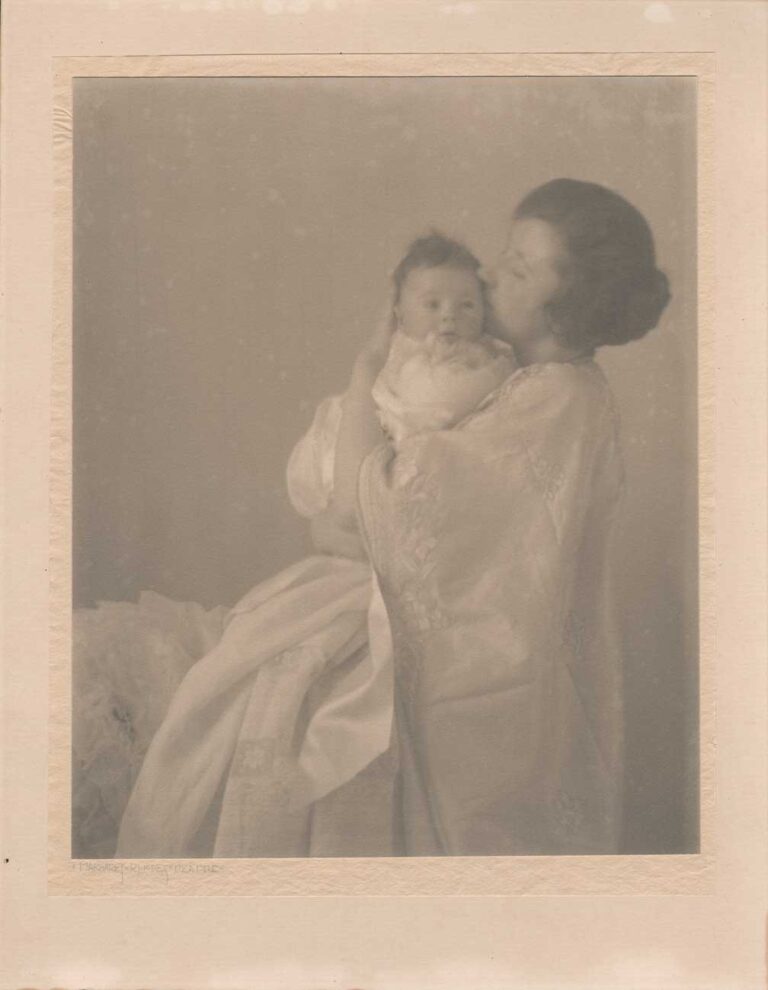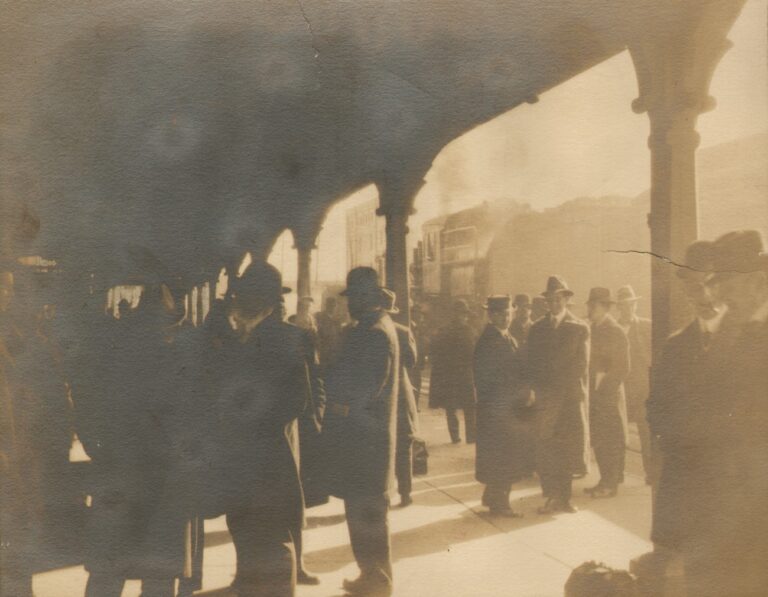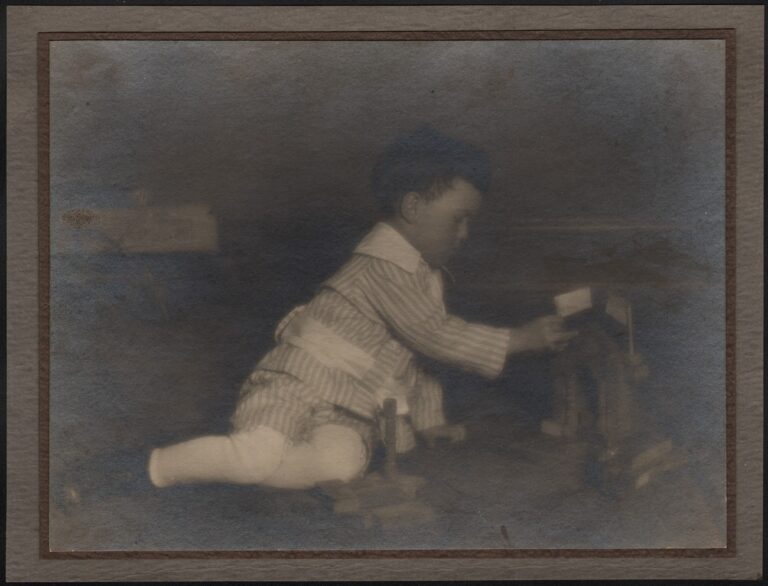
Exposed
The effect of the ruby light of a photographic darkroom was achieved in this vintage print by staining the bromide print red after the original exposure was made by Ohio photographer Leo Kraft using a combination of flash and electric light.
The following article titled My Hobby written by Kraft for the April issue of American Photography magazine outlined the procedure. The photographer’s pipe can be seen lying on the darkroom counter in front with plate holder propped up in background (Exposed appears on dark slide of holder) along with graduate and developing tray at center and right. The article was accompanied by a self-portrait of Kraft working in his darkroom.
My Hobby
In making studies in which two light sources are employed, do not forget that one of them must predominate and appear to be the source of light, the subordinate source being used simply to give a Little detail in the shadows, and soften the lighting from the predominating source, without conflicting with it. Let us analyze this study. We are in a darkroom and the strongest light should be coming from the ruby lantern — which it is apparently not doing. All right — we must try again, for that one incorrect detail makes the picture meaningless. What we must do is to put a powerful bulb in the lantern, and give sufficient exposure so that the details are recorded by its light and not by the light of the supplementary flash which is later employed to give just a faint suggestion of details in places not reached by the illumination of the ruby light. While the ruby glass should be removed from the lantern during this process — a sheet of ground glass substituted — and halation is likely to result, the method employed by Mr. Kraft to avoid this trouble, was correct.
Only a very small amount of sodium carbonate should be used in the developer, and the period of development will for that reason be slow, as the lack of carbonate reduces the rate of development. A study of this type stained red is very effective. Data: 5×7 Seneca view camera, rapid rectilinear lens. Made by a combination of flashlight and electric light, with ruby glass removed from lantern. Plastic plate developed in pyro with a minimum of carbonate. Print on P. M. C. Bromide. (1.)
print details: recto: silvering to print edges; corner glued to primary support.
verso: 1918 written in graphite
Title of this work has been assigned by PhotoSeed. No title appears on original vintage print.
Original copy for this entry posted to Facebook on November 16, 2013:
For those of you of a certain age, or who don’t believe in new fangled technology, the joys of working in a wet darkroom are sure to bring back memories. For sure, the first sensation when entering one was how long it took for your eyes to acclimate to the low light levels. When this photograph by Leo Kraft was taken 95 years ago, Ruby glass was the standard method employed inside darkroom light fixtures in order to prevent exposed film and light sensitive paper from fogging. Photographs of an artistic nature showing the inside of working darkrooms from this era are extremely uncommon. Kraft was a highly skilled amateur who sometimes wrote technical articles on photography. “Exposed” is a rare survivor showing the look of darkness could be achieved by artificial means.
1. My Hobby: from: American Photography: Boston: April, 1918: pp. 220-221



